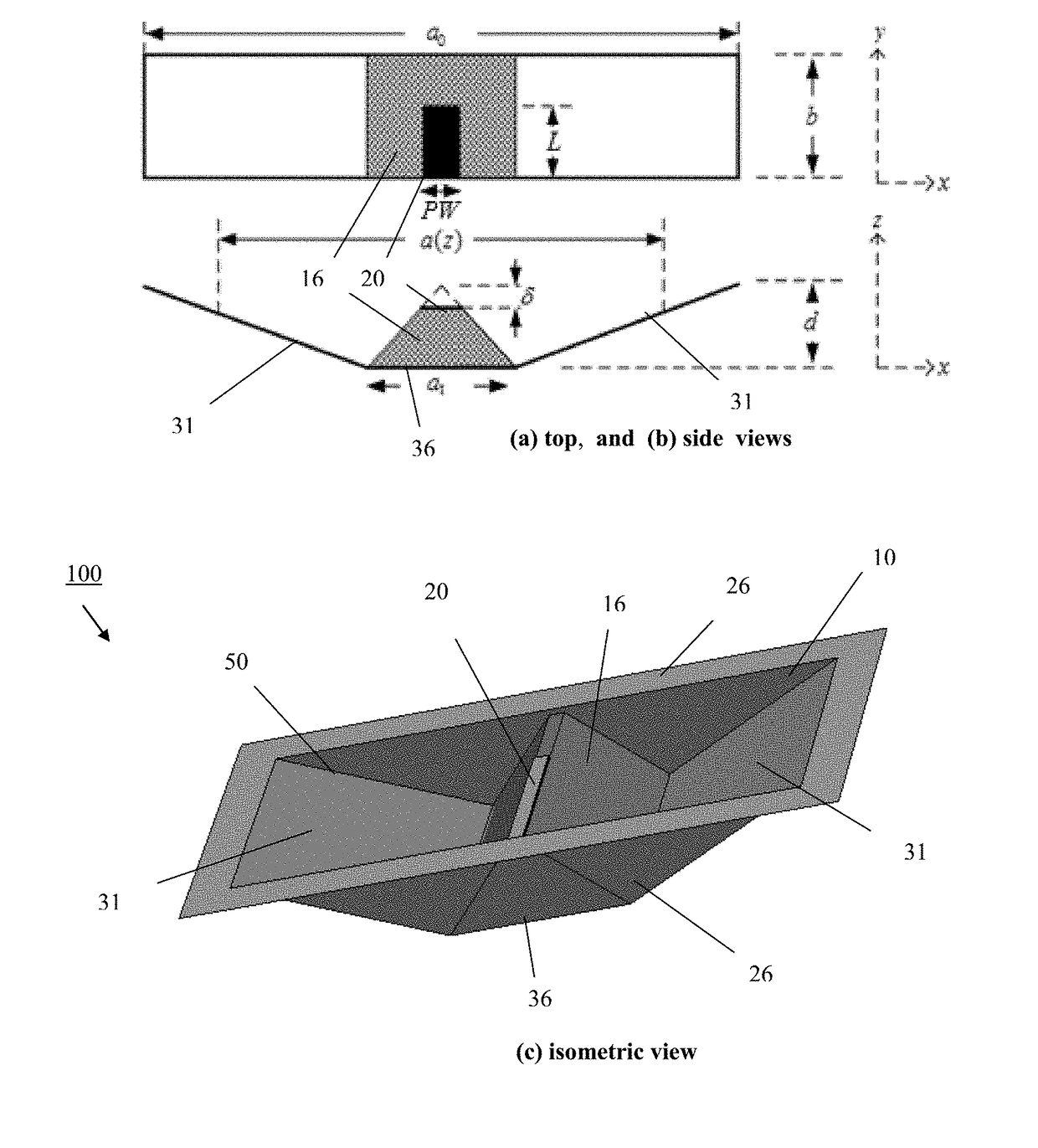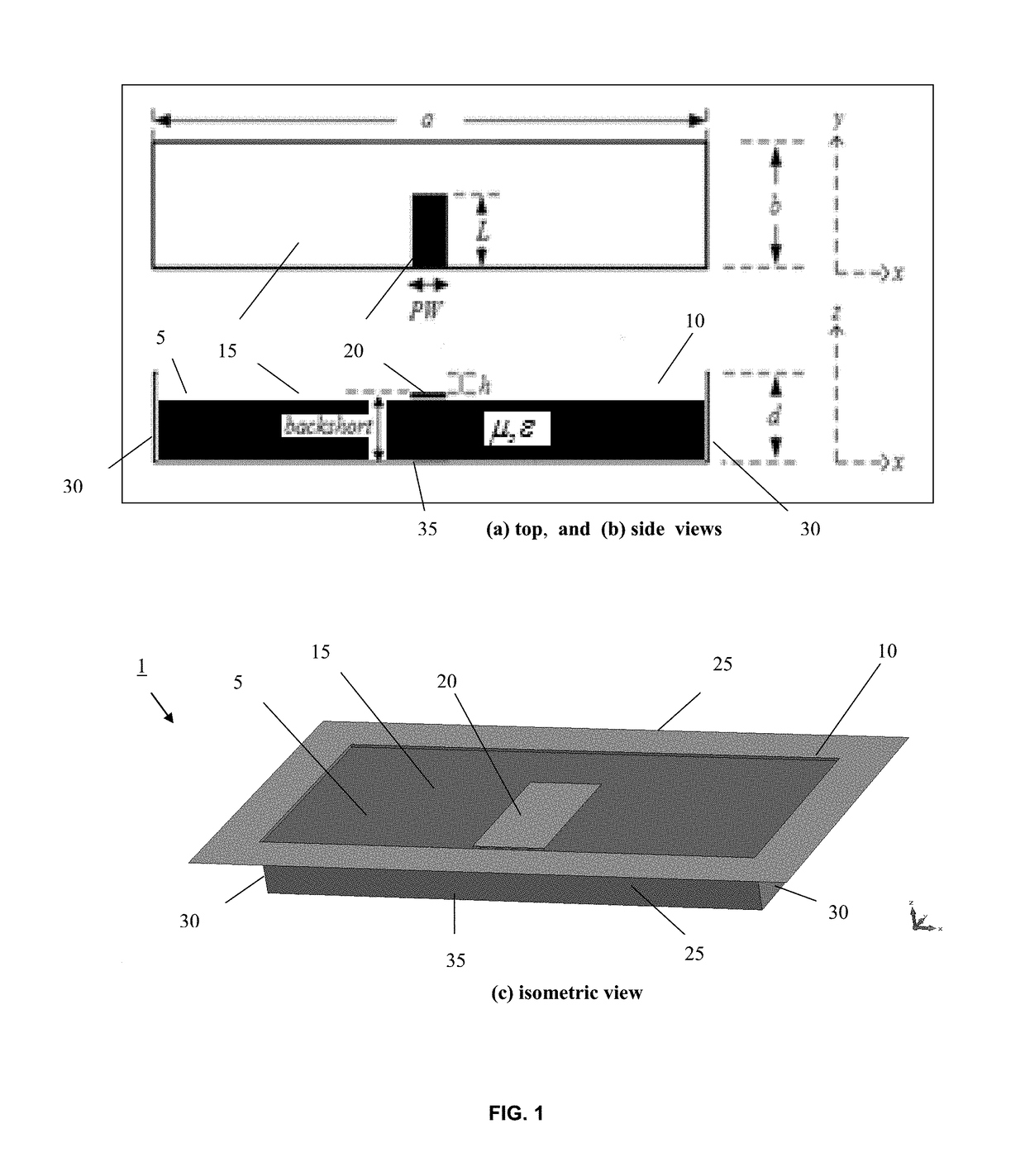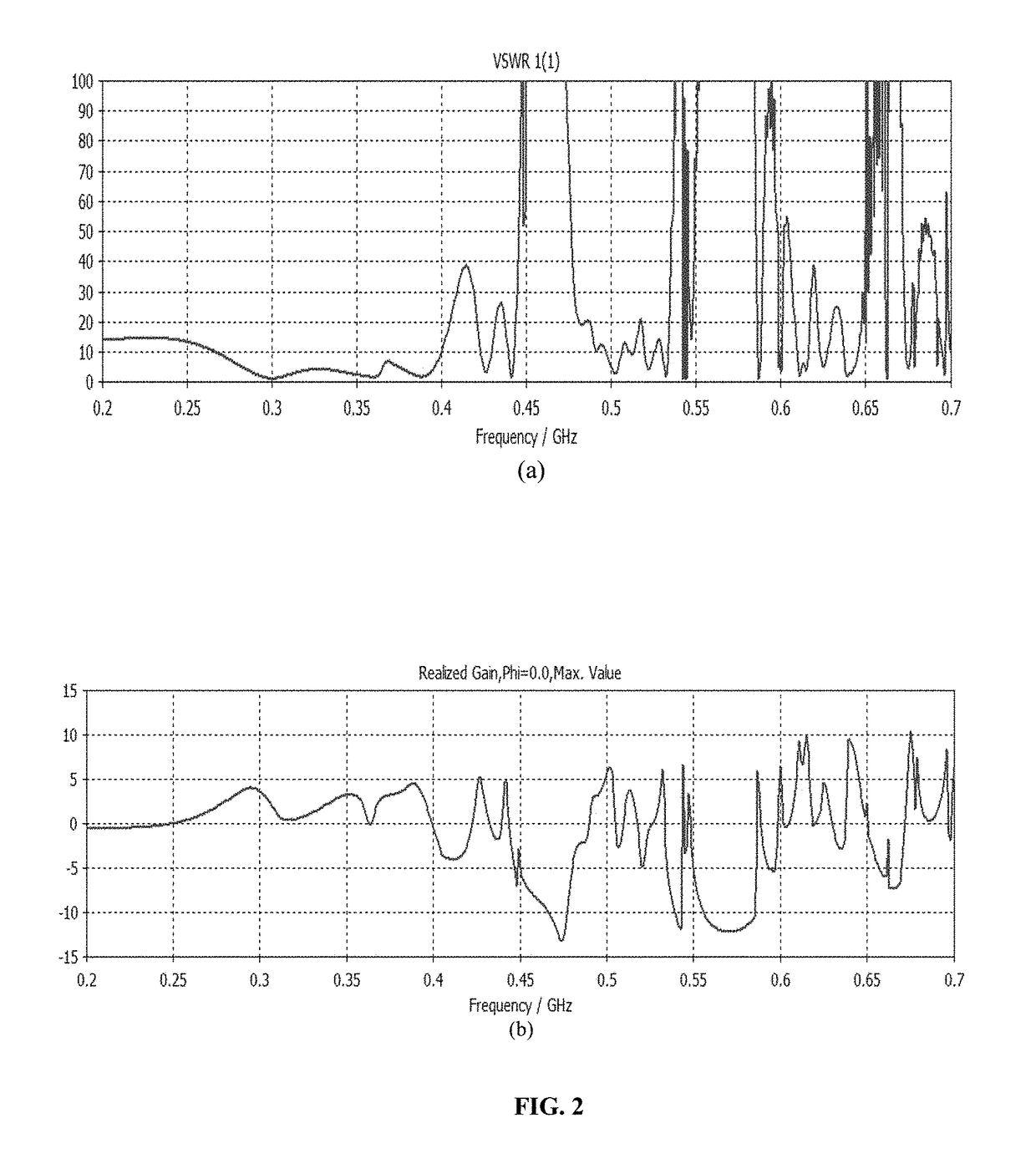Low-profile cavity broadband antennas having an anisotropic transverse resonance condition
a broadband antenna and low-profile cavity technology, applied in the field of broadband antennas, can solve the problems of difficult to match a high dielectric material, general bandwidth limitation, and inability to achieve high dielectric material, and achieve the effect of improving performan
- Summary
- Abstract
- Description
- Claims
- Application Information
AI Technical Summary
Benefits of technology
Problems solved by technology
Method used
Image
Examples
Embodiment Construction
[0035]The present invention provides low-profile cavity broadband antennas having an anisotropic traverse resonance condition. As mentioned above, one important aspect of the invention is the incorporation of an anisotropic high index medium material, at least partially loaded within the cavity. This advantageous feature enables the antenna to maintain a constant resonance frequency within the cavity.
[0036]In some embodiments, the cavity may have tapered lateral sidewalls. Although, results show that the shape of the cavity can be changed as needed with no degradation to the overall antenna performance through control of the permeability in the normal direction μz.
[0037]Before describing embodiments of the present invention, this disclosure first details the derivation of a low profile cavity antenna by the inventors based on an anisotropic traverse resonance condition of a partially loaded cavity. This novel antenna cavity design is specifically designed to maintain a constant reso...
PUM
 Login to View More
Login to View More Abstract
Description
Claims
Application Information
 Login to View More
Login to View More - R&D
- Intellectual Property
- Life Sciences
- Materials
- Tech Scout
- Unparalleled Data Quality
- Higher Quality Content
- 60% Fewer Hallucinations
Browse by: Latest US Patents, China's latest patents, Technical Efficacy Thesaurus, Application Domain, Technology Topic, Popular Technical Reports.
© 2025 PatSnap. All rights reserved.Legal|Privacy policy|Modern Slavery Act Transparency Statement|Sitemap|About US| Contact US: help@patsnap.com



